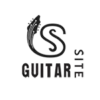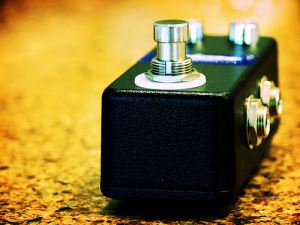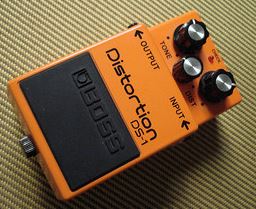A lot of people want to use effects pedals in their playing, but some are put off by their cost and the difficulty of going from messing around with them to creating a live act that makes the most of their potential.
My experience with using pedals has mostly been a case of trial and error. I would recommend that anyone who wants to start using pedals should put in the time to build up their general tuning abilities and playing before they start to spend money on pedals.
While they are fun to play around with, it’s important to not just view them as an expensive toy, but as something that can allow you to do interesting things with your guitar that wouldn’t be possible elsewhere. It’s also important to think about how far effects pedals aren’t just for distortion and reverb, but can equalize and clean up your playing when on stage. I’m going to consequently try to discuss some of the opening costs and types of pedals, and what you should look out for.
Buying and Basics
Again, it’s worth thinking about whether you need an effects pedal as a beginner. Pedals alter the output of a guitar when connected between it and an amp, and include equalizers, distortion pedals, and specific effects that can be used to enhance solos. Most new pedals will start at somewhere between $20 and $100, before going up to more expensive items. Generally, it’s better to wait until you can afford a more expensive pedal that will last, while borrowing and using others in a practice room or studio. In terms of brands that I’ve liked in the past, Electro-Harmonix and BOSS have been the most reliable for me.
Understanding Different Types of Pedals
When setting up a number of pedals, it’s important to have equalizer pedals that will help to control tone and volume, while producing more specific effects. The most common kinds of pedals are distortion and over drive based, and match the wave passing from a guitar to create a distorted sound. Overdrive effects are generally used to create a more powerful sound, and are typically heard on solos.
Filters
One of the most distinctive ways in which you can use pedals is to make use of phasing and flange effects, which split a guitar signal into two overlapping signals that can be mixed to create a resonant sound. Wah wah pedals work in a similar way by altering the frequencies of a signal, which can produce the distinctive sound that can be heard in Jimi Hendrix solos.
Reverb and Delays
A good way to create strong, atmospheric echo in our playing, a delay can be used to sample and repeat riffs and chords, creating depth and allowing you to modulate the speed of a repeating sound.
Equalisers and Compressors
It is also important to be able to control the tone and the range of a signal, with limiting pedals used to modulate volume, while compressors set a fixed ratio that prevents distortion. Noise gates also work well, in this way, by cutting out background noise and unwanted sounds.
Beginners should think about picking up a distortion pedal and a compressor, while experimenting with different filters. It’s also useful to have an electronic tuning pedal as part of a pedalboard, which can be checked to ensure that any original signals are properly tuned before effects are applied.
About The Author
Christine Paterson is a writer who wrote this guide on behalf of LickLibrary who provide video guitar lessons. Visit LickLibrary for more information.
Related Articles:
Our list of recommended Cheap Guitar Pedals
Finding the best Distortion Pedal
A roundup of the best Wah Pedals
The Top 10 Effects Pedals including single pedals & multieffects processors.
Would you like to know what the best Overdrive Pedals are? Click here for our Roundup




